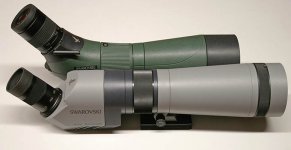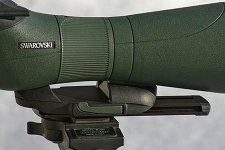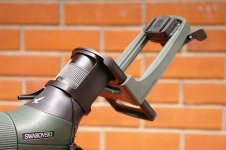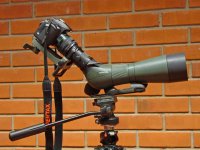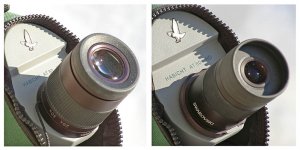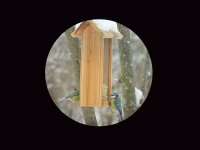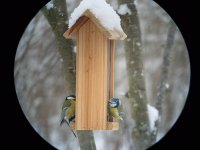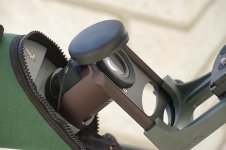Hi all,
During the last few months of silent Finnish birding season I have been very lucky to borrow and test a friend's latest Swarovski ATM80HD spotting scope with all the digiscoping bells and whistles. Squidge asked below about the opinions of this scope and to my slight surprise I couldn't find here an "in depth" review of the A/STM80 - so, here is my collection of observations with the new system compared to my older AT80HD, which I thought I would never have a need to replace…
Sorry about the verbosity of this post - I may have got carried away with this "in depth" thing . I tried to divide the content in shorter sections to make it easier to swallow and to get the illustration at approximately correct places.
. I tried to divide the content in shorter sections to make it easier to swallow and to get the illustration at approximately correct places.
Looks:
Externally the shape and colours of the ATM80HD are almost identical to the earlier ATS model. This looks like an evolutionary update with new lens coatings and utilization of magnesium alloys in the manufacturing. First I preferred the ATS colour scheme (black focusing wheel, green sunshade) to the ATM (black sunshade, green focus wheel), but the more I got used to the new, the more 'balanced' it started to feel. Well, they both work to me - and that nice grippy surface looks and feels so good that it would almost be a shame to cover it with a SOC. I liked the functionality of the SOC of the old AT80-body, but obviously that tightly-fitting case shows the slim waist of the ATS/M much better. I didn't weigh the scopes, but the ATM body is *a lot* more compact (as can be seen) and lighter in weight than the AT. I don't think the difference to the ATS is significant.
Please, notice that in the picture I have shown the big difference between the AT and ATM, but in the text I often talk about marginal differences of the ATS and ATM.
During the last few months of silent Finnish birding season I have been very lucky to borrow and test a friend's latest Swarovski ATM80HD spotting scope with all the digiscoping bells and whistles. Squidge asked below about the opinions of this scope and to my slight surprise I couldn't find here an "in depth" review of the A/STM80 - so, here is my collection of observations with the new system compared to my older AT80HD, which I thought I would never have a need to replace…
Sorry about the verbosity of this post - I may have got carried away with this "in depth" thing
Looks:
Externally the shape and colours of the ATM80HD are almost identical to the earlier ATS model. This looks like an evolutionary update with new lens coatings and utilization of magnesium alloys in the manufacturing. First I preferred the ATS colour scheme (black focusing wheel, green sunshade) to the ATM (black sunshade, green focus wheel), but the more I got used to the new, the more 'balanced' it started to feel. Well, they both work to me - and that nice grippy surface looks and feels so good that it would almost be a shame to cover it with a SOC. I liked the functionality of the SOC of the old AT80-body, but obviously that tightly-fitting case shows the slim waist of the ATS/M much better. I didn't weigh the scopes, but the ATM body is *a lot* more compact (as can be seen) and lighter in weight than the AT. I don't think the difference to the ATS is significant.
Please, notice that in the picture I have shown the big difference between the AT and ATM, but in the text I often talk about marginal differences of the ATS and ATM.
Attachments
Last edited:




